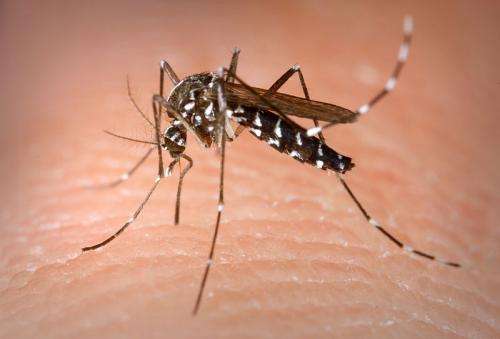How does climate change help to spread diseases?

Many vector-borne diseases are transmitted by mosquitoes. Mosquitoes are cold-blooded insects, which means that environmental conditions, in particular temperatures, regulate their metabolism, development and activity. For instance, mosquitoes develop faster when it is warmer (provided temperatures aren't too extreme). Given current and projected warming, most of the micro-environments that mosquitoes exploit will be well within the range that not only allows mosquitoes to live, but to develop quicker. And as mosquitoes develop more quickly, they are more effective at transmitting diseases.
The availability of water is also important for mosquito development, activity and disease transmission. The first three stages of the mosquito life cycle (egg, larvae, pupae) take place in an aquatic environment. Hydrologic variability—changes in precipitation, evaporation, runoff—affects the size and persistence of these habitats, which in turn affect mosquito development and abundance. Changes to the hydrologic cycle due to climate change, thus, will affect mosquito numbers.
Temperature also affects the mosquito gonotrophic, or reproductive, cycle. Female mosquitoes feed on blood in order to support egg development. Typically, a female takes a blood meal, then rests while her eggs develop. She lays the eggs once they are ready, then seeks out a new host in order to feed again and repeat the gonotrophic cycle. The act of repeated feeding is what allows mosquitoes to act as vectors of disease. Typically, mosquitoes emerge from pupation without infection, acquire a pathogen upon feeding on an infected host, and then transmit the pathogen to a new host during subsequent feedings. Sufficient numbers of mosquitoes must survive long enough to feed multiple times in order to sustain and spread mosquito-borne pathogens in a given area. As temperatures increase, mosquito eggs develop faster, which accelerates the gonotrophic cycle and leaves the female mosquito more time and opportunity to seek multiple blood meals. This is another way that warming temperatures elevate mosquito-borne disease risk.
In addition, as temperatures warm in northerly regions, the range of some mosquito species will expand, bringing potential disease vectors into new areas.
The reason cities like New York have not seen mass outbreaks of Zika is because so much of the infrastructure—the paved surfaces, water control, buildings with screens and air conditioning—effectively separates humans and mosquitoes. However, as temperatures increase in regions without these mitigating factors, the potential for local transmission of disease will likely increase as mosquito development and activity accelerate.
How does climate change bring back prehistoric diseases?
As the tundra in Alaska, Canada, and Northern Eurasia thaws, remnants of prehistoric pathogens that were trapped in the ice might re-enter the surface environment. However, I think the likelihood that a viable pathogen of human concern emerges is very low. There are several lines of reasoning supporting this belief.
Firstly, the integrity of DNA and cellular structures degrades over time, even in permafrost ice. Most organisms will have been trapped for millennia, so there is little likelihood they will still be viable and capable of infecting a host. Some micro-organisms have been discovered in samples taken from the tundra, but most have not been viable.
Secondly, I suspect there has been some movement of micro-organisms out of sequestered environments, whether subterranean or in ice; however, I think the likelihood these organisms will impact humans is small. Most, even if viable, are not capable of infecting humans. For instance, viruses found in the tundra could have any number of natural hosts, from plants to bacteria to protozoa.
Given these issues, I think the risk posed from the release of viruses and other pathogens into the environment is there, but it is small.
Provided by Earth Institute, Columbia University
This story is republished courtesy of Earth Institute, Columbia University http://blogs.ei.columbia.edu.




















